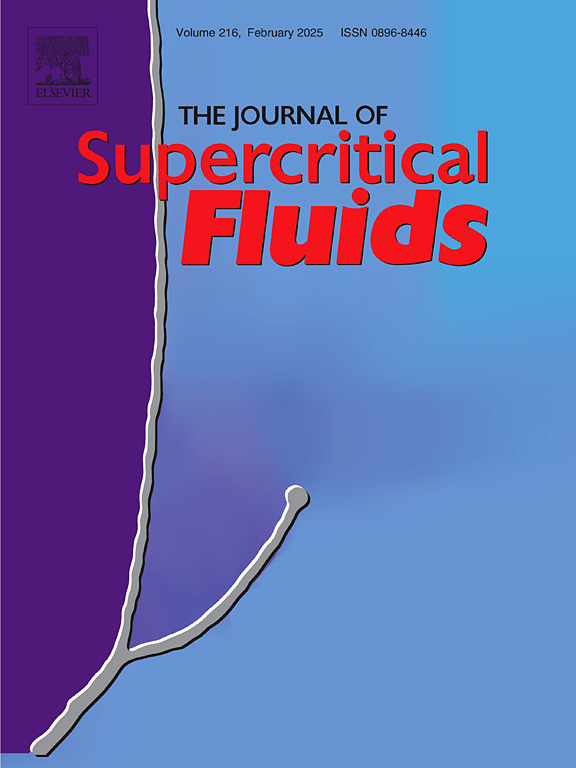Employing supercritical n-butanol to remove the EVA film for the delamination of photovoltaic laminated module
IF 3.4
3区 工程技术
Q2 CHEMISTRY, PHYSICAL
引用次数: 0
Abstract
The rapid advancement of the photovoltaic (PV) industry has elevated the recycling and reuse of decommissioned PV modules to critical challenges, essential for tackling environmental concerns and achieving resource reutilization. To facilitate the efficient layering of PV modules and recovery of valuable materials, this study proposes a PV module degradation and recycling process utilizing supercritical n-butanol. A systematic evaluation was conducted to assess the effects of various factors on the dissolution ratio of PV modules, with an appropriate range of process parameters selected for optimization. A second-order regression model was developed to predict the dissolution ratio of the EVA film. Comparison of actual dissolution ratio with model predictions confirmed the high accuracy of the fitted model. Finally, characterization and elemental analysis of cells recovered from the supercritical process demonstrated the effectiveness of this recycling method, achieving more thorough degradation on the cell surfaces.
求助全文
约1分钟内获得全文
求助全文
来源期刊

Journal of Supercritical Fluids
工程技术-工程:化工
CiteScore
7.60
自引率
10.30%
发文量
236
审稿时长
56 days
期刊介绍:
The Journal of Supercritical Fluids is an international journal devoted to the fundamental and applied aspects of supercritical fluids and processes. Its aim is to provide a focused platform for academic and industrial researchers to report their findings and to have ready access to the advances in this rapidly growing field. Its coverage is multidisciplinary and includes both basic and applied topics.
Thermodynamics and phase equilibria, reaction kinetics and rate processes, thermal and transport properties, and all topics related to processing such as separations (extraction, fractionation, purification, chromatography) nucleation and impregnation are within the scope. Accounts of specific engineering applications such as those encountered in food, fuel, natural products, minerals, pharmaceuticals and polymer industries are included. Topics related to high pressure equipment design, analytical techniques, sensors, and process control methodologies are also within the scope of the journal.
 求助内容:
求助内容: 应助结果提醒方式:
应助结果提醒方式:


